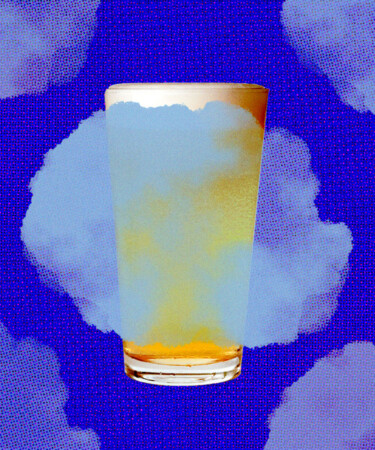Ever since hazy IPAs hit the scene in the mid-aughts, they’ve been the bread and butter of the American craft beer industry. What started in a small pocket of the American Northeast has since been adopted by brewers all over the world, and now numerous substyles exist under the hazy IPA umbrella.
Despite the overwhelming variety within the category, the yellow-to-orange, juice-like appearance of these brews is almost always a given. Consequently, those just embarking on their personal haze craze often equate an IPA’s sheer murkiness to a preconceived flavor profile, prompting them to ask for “the haziest IPA you’ve got” whenever they belly up to a bar.
Although the request is seemingly straightforward, it’s kind of like asking a somm for the “whitest white wine you’ve got.” The server will likely be confused and unsure of exactly what the guest is looking for, leading to more questions and a potentially exhausting conversation. To find out what goes through a bartender’s head when they hear this order, we sat down with Tom Beiner, beer manager at Brooklyn’s Covenhoven.
“‘What’s the haziest?’ is one of those loaded questions we get all the time,” Beiner says. “I then have to ask, ‘Well, what sort of hazy are we looking for? Are you looking for strength and overall alcohol content over everything else? Are you looking for something light and crushable?’ It could go in so many different directions.”
While typical examples of the style are tropical, hoppy, and full-bodied, the category now encompasses everything from low-ABV, sessionable IPAs to 10-percent-ABV sippers that have been hopped to high heaven. There are even a few experimental offshoot styles like sour IPAs and milkshake IPAs — both of which are indeed hazy.
There are a lot of factors that dictate the strength and overall flavor profile of these beers, but the level of visible haziness isn’t one of them. In truth, the cloudy appearance can be attributed to insoluble proteins derived from oats and wheat (consider the fact that witbiers, like Blue Moon, are typically hazy in appearance, but aren’t IPAs). Additionally, hazy IPAs can derive their signature opaque hue from specific yeast strains and hop oils. From a flavor perspective, all hazies are hoppy, but the specific hop variety or hop blend is going to have a profound impact on a given beer’s profile.
“A hazy could be a New Zealand hop bomb filled with tropical-leaning flavors, but it could also have a mix of Mosaic, Citra, Cascade, or other old-school West Coast varietals,” Beiner says. “A lot of people think all hazies are soft and fruit-forward, but plenty are dank, dense, and piney. So when someone tells us they just want something super hazy, it’s hard to know what they’re actually looking for. It’s like they know what they like but don’t know what they like at the same time.”
The silver lining of the arbitrary request for the “haziest IPA” is that it opens the floor for bartenders to educate their guests and help them find a beer they’re going to enjoy. After all, regardless of how they frame their order, anyone ordering a hazy at a bar just wants to drink something they know they’re going to like.
“We’re always giving out samples to our customers to help them find which direction they want to go in, and often that means introducing them to something they didn’t know about before,” Beiner says. “The fun of beer is there’s so many different styles. Don’t be afraid to try something new.”
*Image retrieved from Brent Hofacker via stock.adobe.com
